The Memory of Venice
This year's visit of Venice Architecture Biennial was super fast. Train from Trieste to Venice with the most beautiful gaze to the Adriatic coast. From Santa Lucia to Giardini with the targetto with a lot of open question on our VAB - Cold Cases campaign in my head. What will Lesley Lokko question herself under the title The Laboratory Of The Future.

She states that "an architecture exhibition is both a moment and a process. It borrows its structure and format from art exhibitions, but it differs from art in critical ways which often go unnoticed. Aside from the desire to tell a story, questions of production, resources and representation are central to the way an architecture exhibition comes into the world, yet are rarely acknowledged or discussed."

For the first time ever, this year the spotlight has fallen on Africa and the African Diaspora, that fluid and enmeshed culture of people of African descent that now straddles the globe.
According to Lokko it is often said that culture is the sum total of the stories we tell ourselves, about ourselves. Whilst it is true, what is missing in the statement is any acknowledgement of who the ‘we’ in question is. The ‘story’ of architecture is therefore incomplete. It is in this context particularly that exhibitions matter. They are a unique moment in which to augment, change, or re-tell a story, whose audience and impact is felt far beyond the physical walls and spaces that hold it.
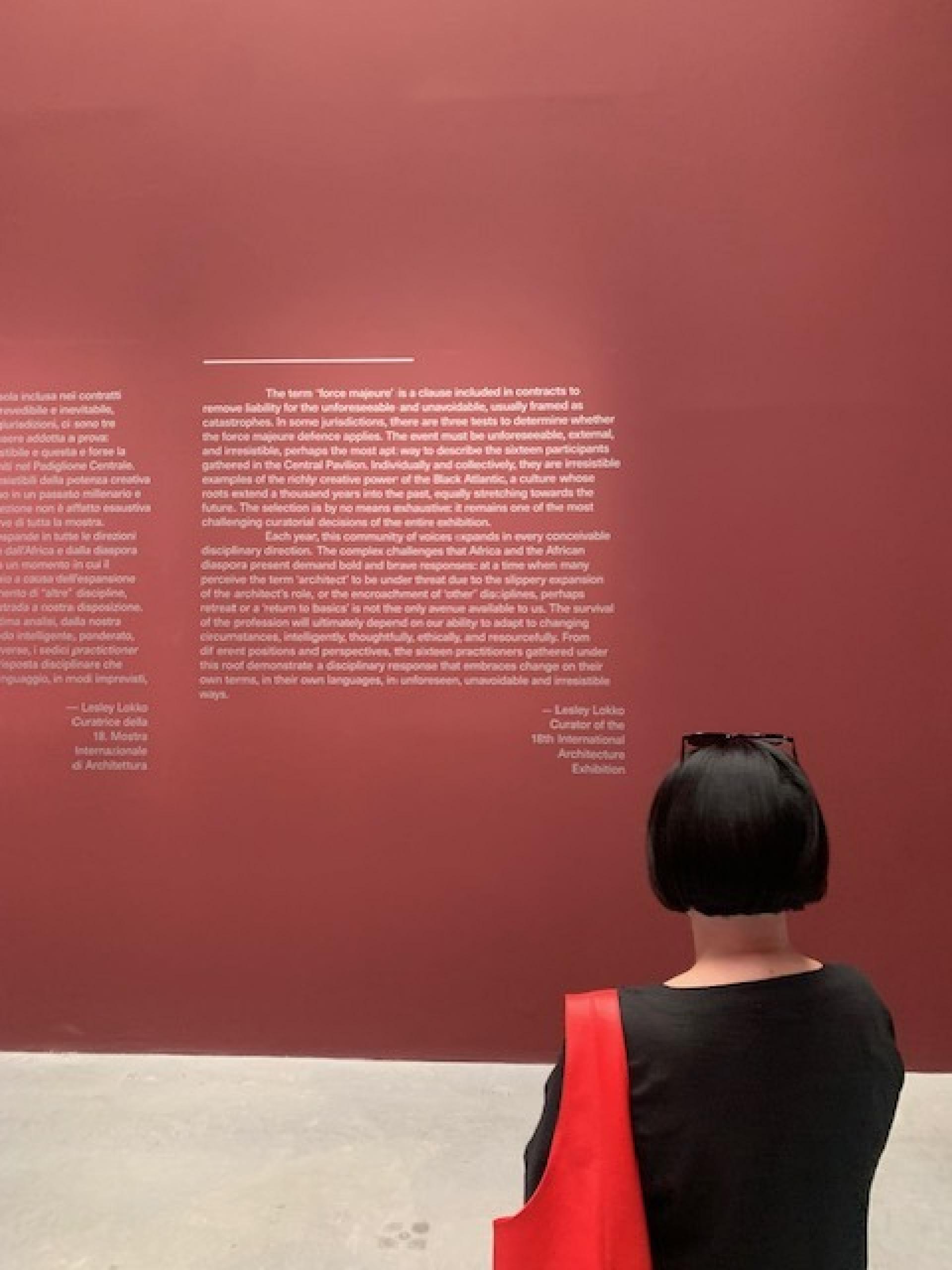
"The Laboratory of the Future is an exhibition of six parts and includes 89 participants, over half of whom are from Africa or the African Diaspora. The gender balance is 50/50, and for the first time ever, nearly half of participants are from sole or individual practices of five people or less. Across all the parts of The Laboratory of the Future, over 70% of exhibits are by practices run by an individual or a very small team. These statistics reflect a seismic change in the culture of architectural production at large, and an even greater shift in participation in international exhibitions. The balance has shifted. Things fall apart. The centre can no longer hold," wrote in her statement Lesley Lokko.
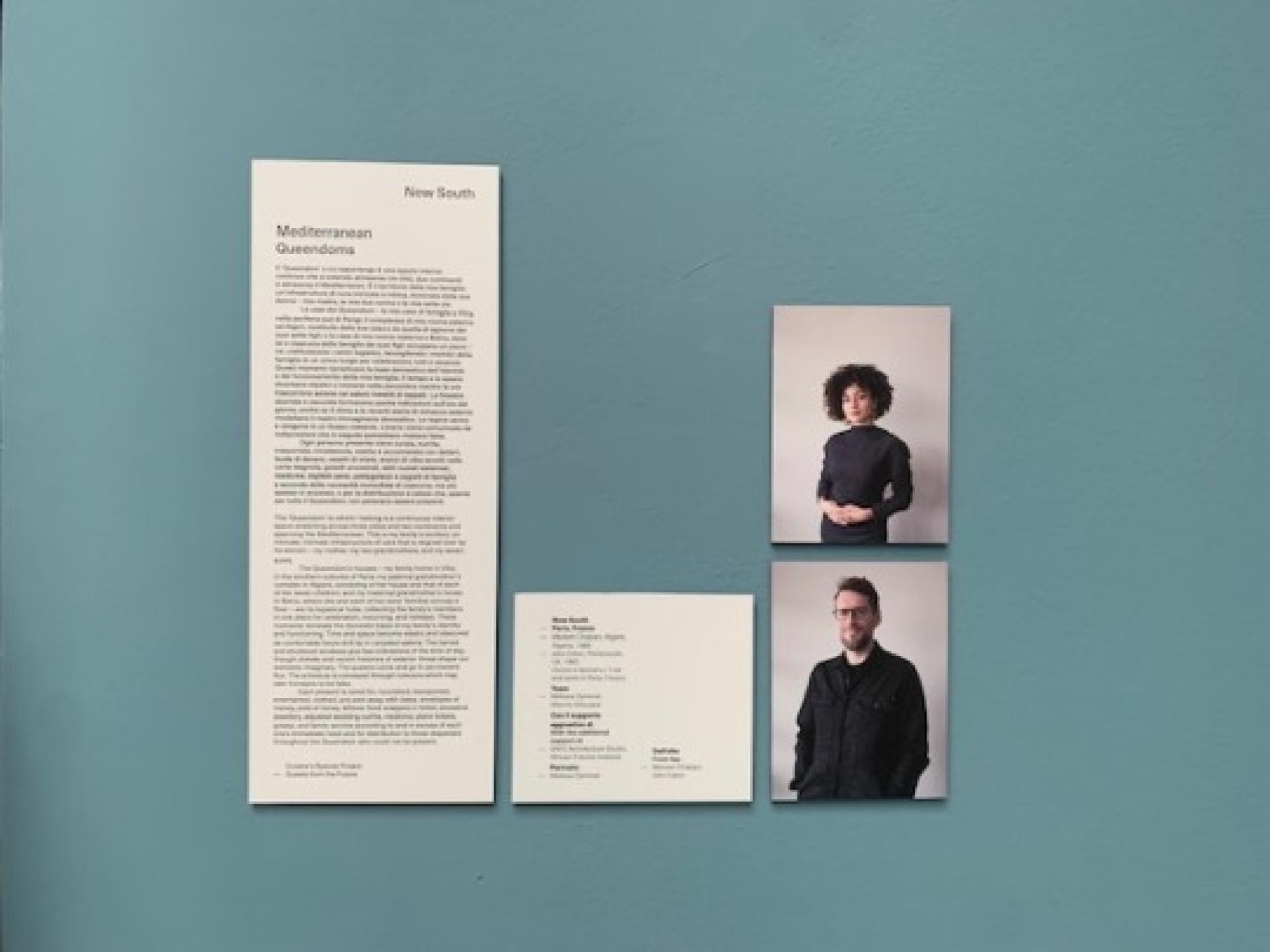
New South exhibit in the part of the Guests from the Future under the theme of the Mediterranean Queendoms.
I started my exhibition walk exactly at 10 am at the Central Pavilion in the Giardini. There are 16 practices who represent a distilled force majeure of African and Diasporic architectural production have been gathered. It moves to the Arsenale complex, where participants in the Dangerous Liaisons section – represented also in Forte Marghera in Mestre, Venice mainland, with a large-scale installation by Emmanuel Pratt - rub shoulders with the Curator’s Special Projects, for the first time a category that is as large as the others.
In the extremely well structured Giardini central pavilion there is also our LINA fellow Meriem Chabani (Algiers, Algeria, 1989). With John Edom (Portsmouth, UK, 1983) and in collaboration with Mélissa Dyminat and Marine Gilouppe presents their office New South based in Paris. The Mediterranean Queendoms is a continuous interior space stretching across three cities and two continents and spanning the Mediterranean. It is Meriem's family’s territory: an intricate, intimate infrastructure of care that is reigned over by its women – her mother, her two grandmothers, and her seven aunts.
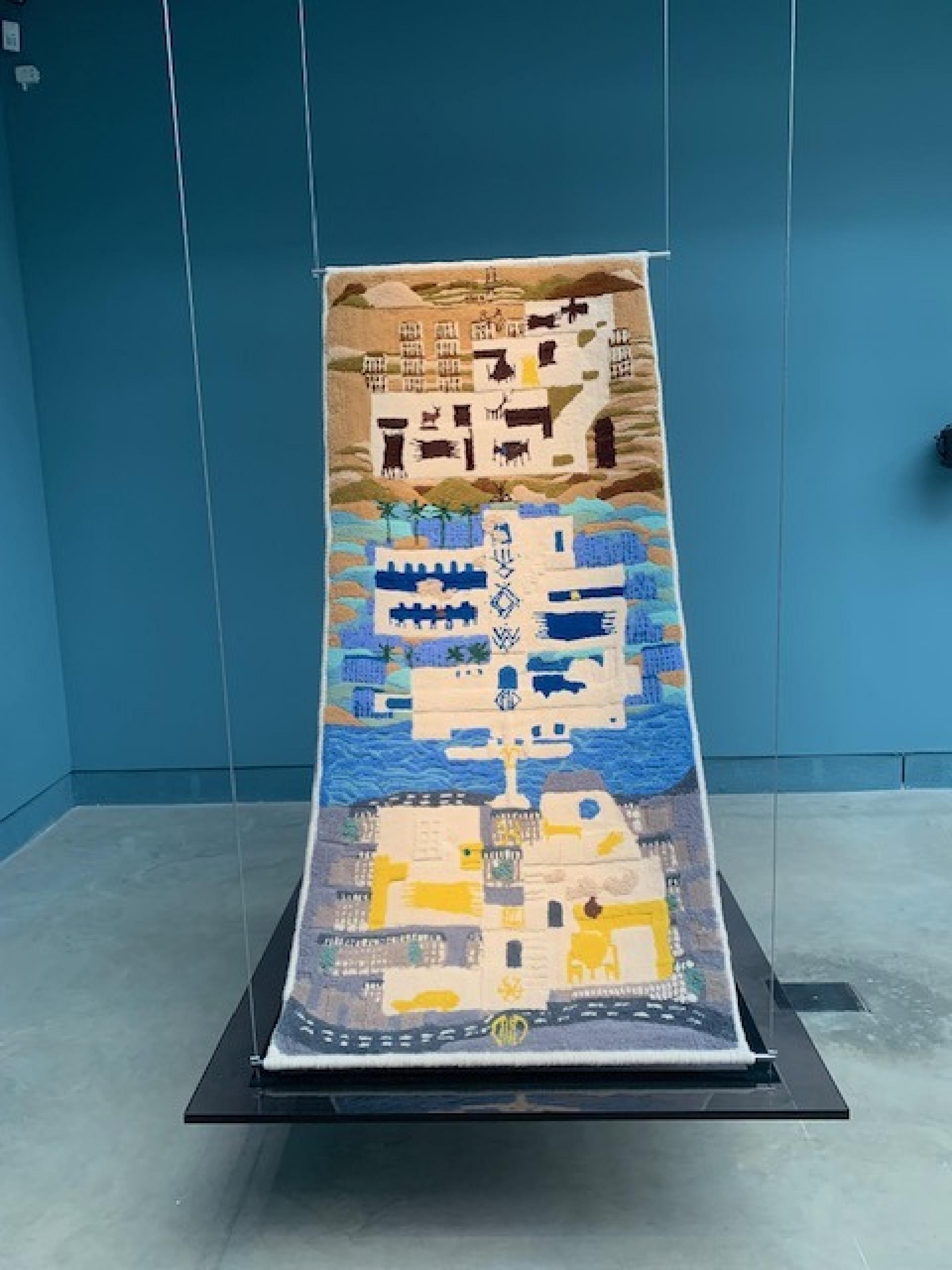
The Mediterranean Queendoms is a continuous interior space stretching across three cities and two continents and spanning the Mediterranean.
The Queendom’s houses, (in Vitry, Paris; in Algiers, and in Batna) – are its logistical hubs, collecting the family’s members in one place for celebration, mourning, and holidays. The queens come and go in permanent flux. The schedule is conveyed through rumours which may later transpire to be false. Each present is cared for, nourished, transported, entertained, clothed, and sent away with dates, envelopes of money, pots of honey, leftover food wrapped in tinfoil, ancestral jewellery, adjusted wedding outfits, medicine, plane tickets, gossip, and family secrets according to and in excess of each one’s immediate need and for distribution to those dispersed throughout the Queendom who could not be present.
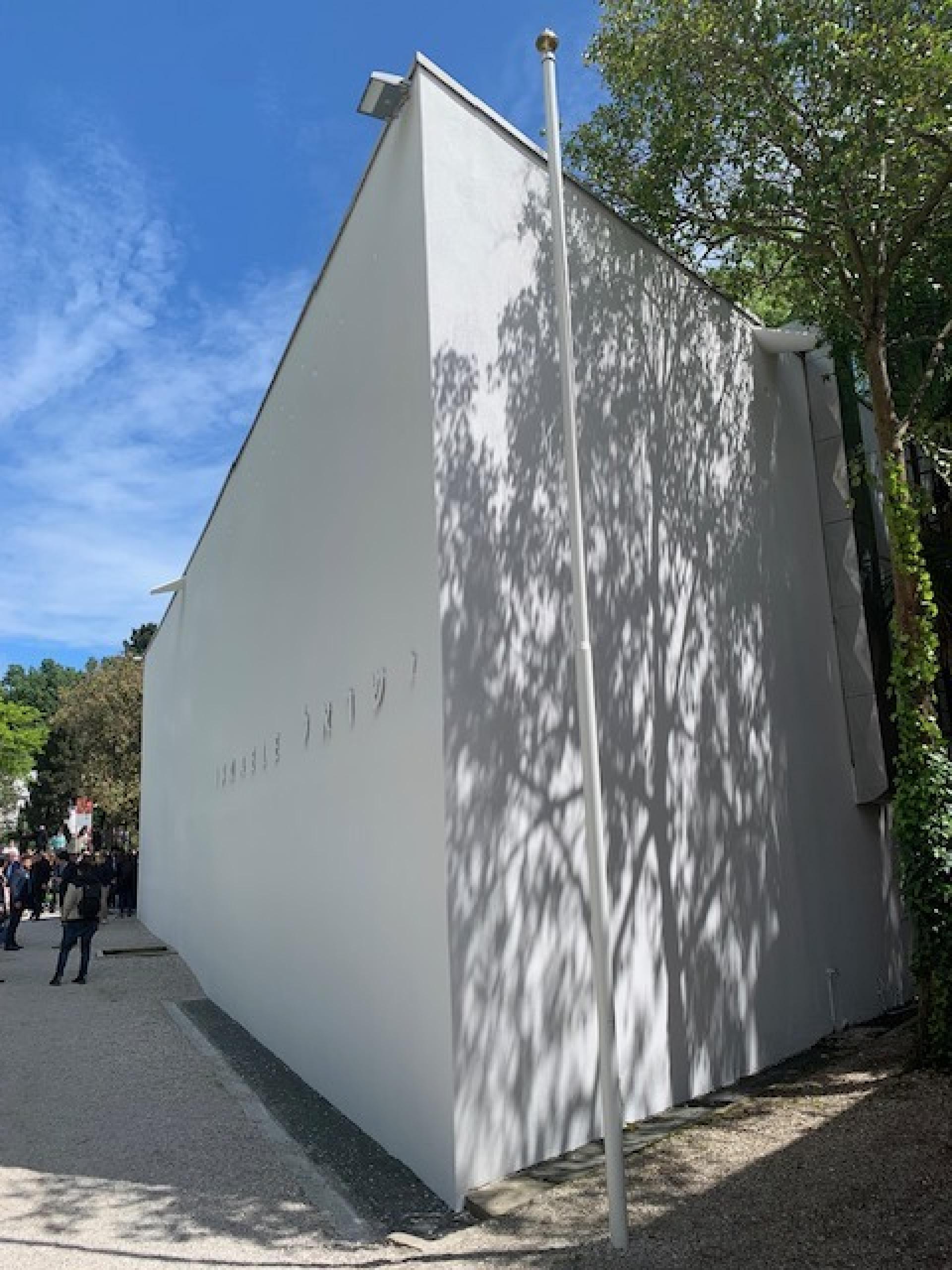
Israeli Pavilion has no possibility to enter.
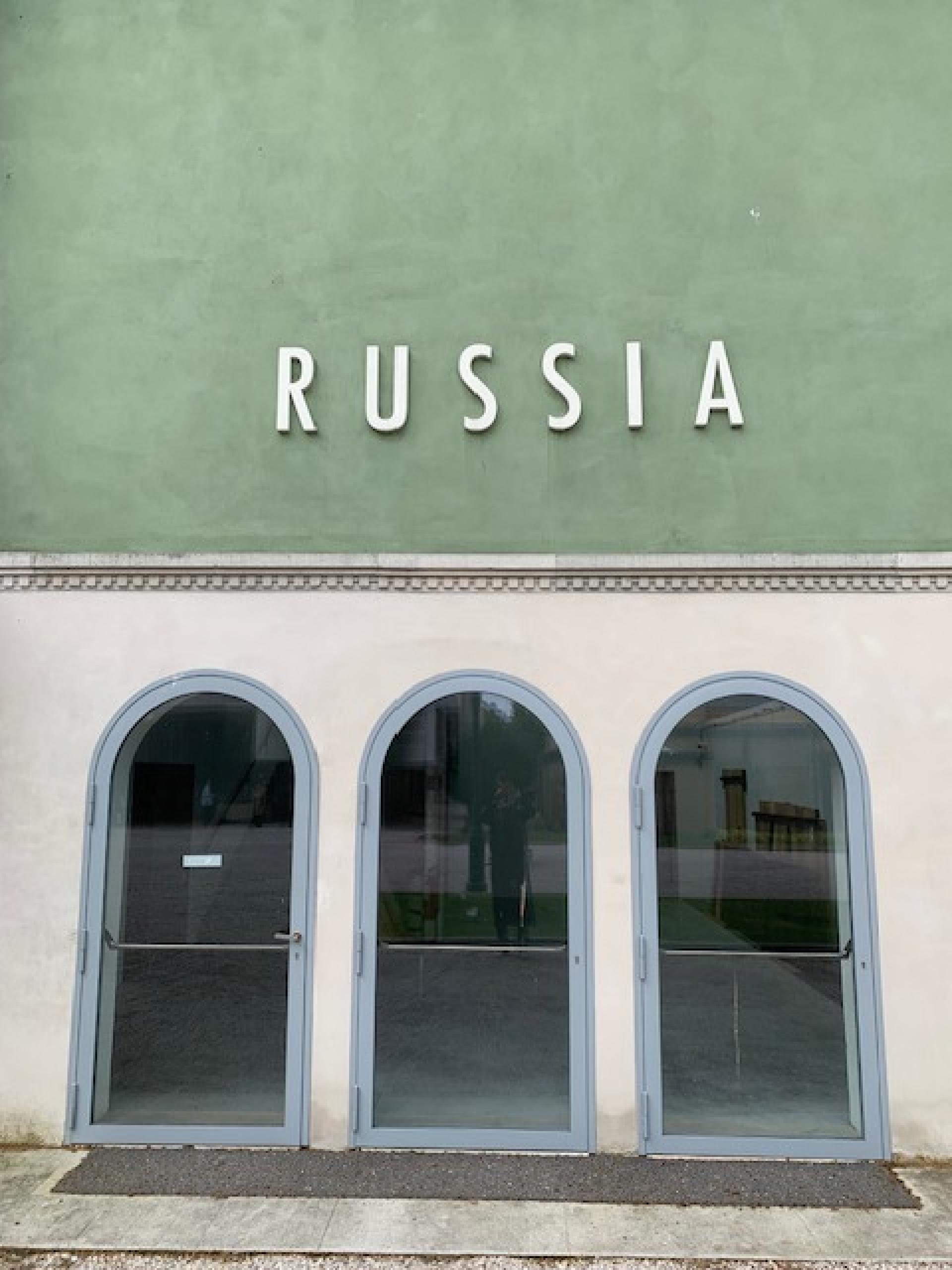
Closed and empty Russian Pavillon.
We can definitely say that this year's exhibition is not about clima change but about how we will change. As Kyong Park, a curator of Korean pavilion, states "we can not control our future if we can’t control our past.
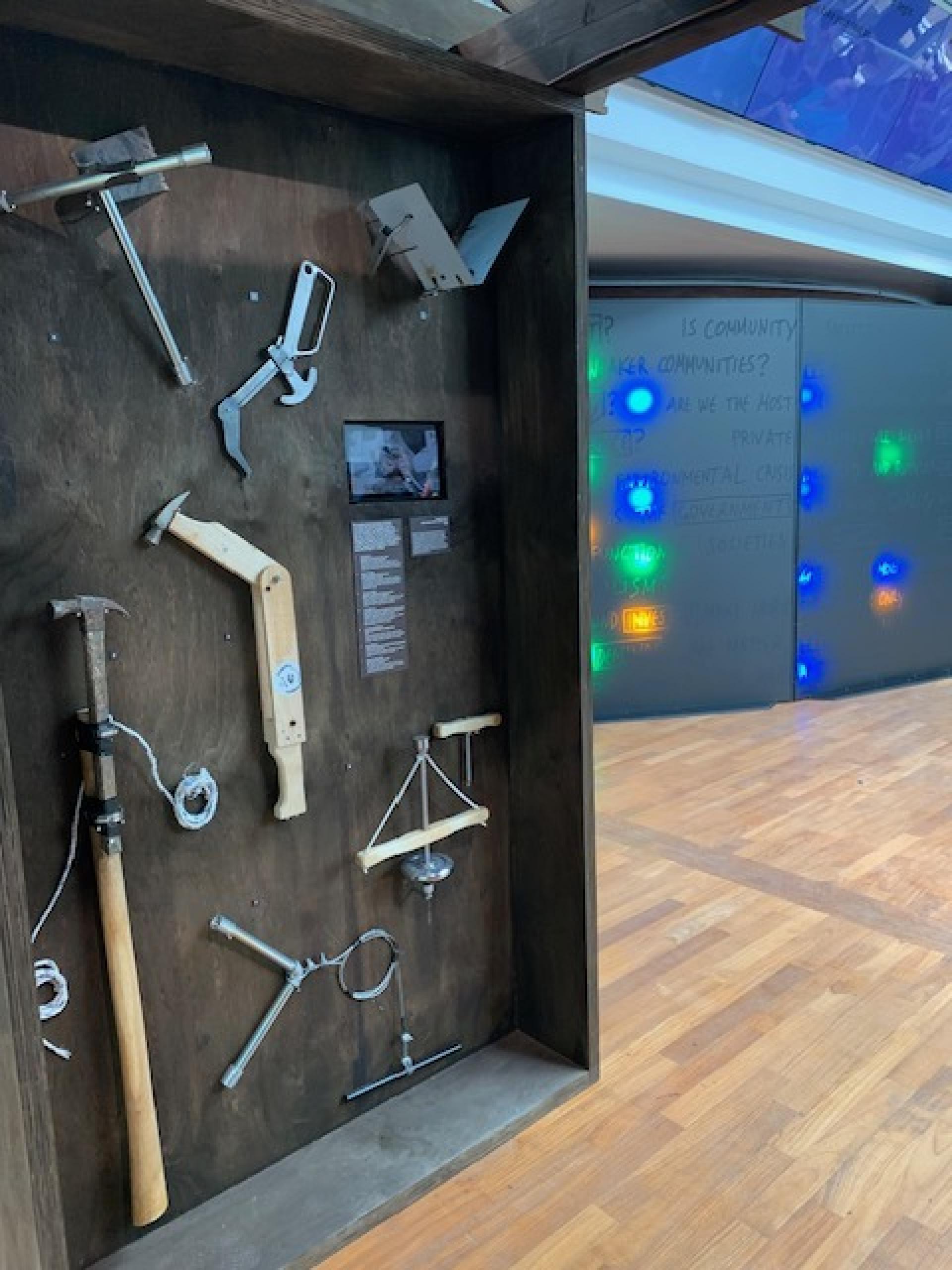
"We are not citizens anymore we are consumers participating in creating inequality," states Kyong Park.
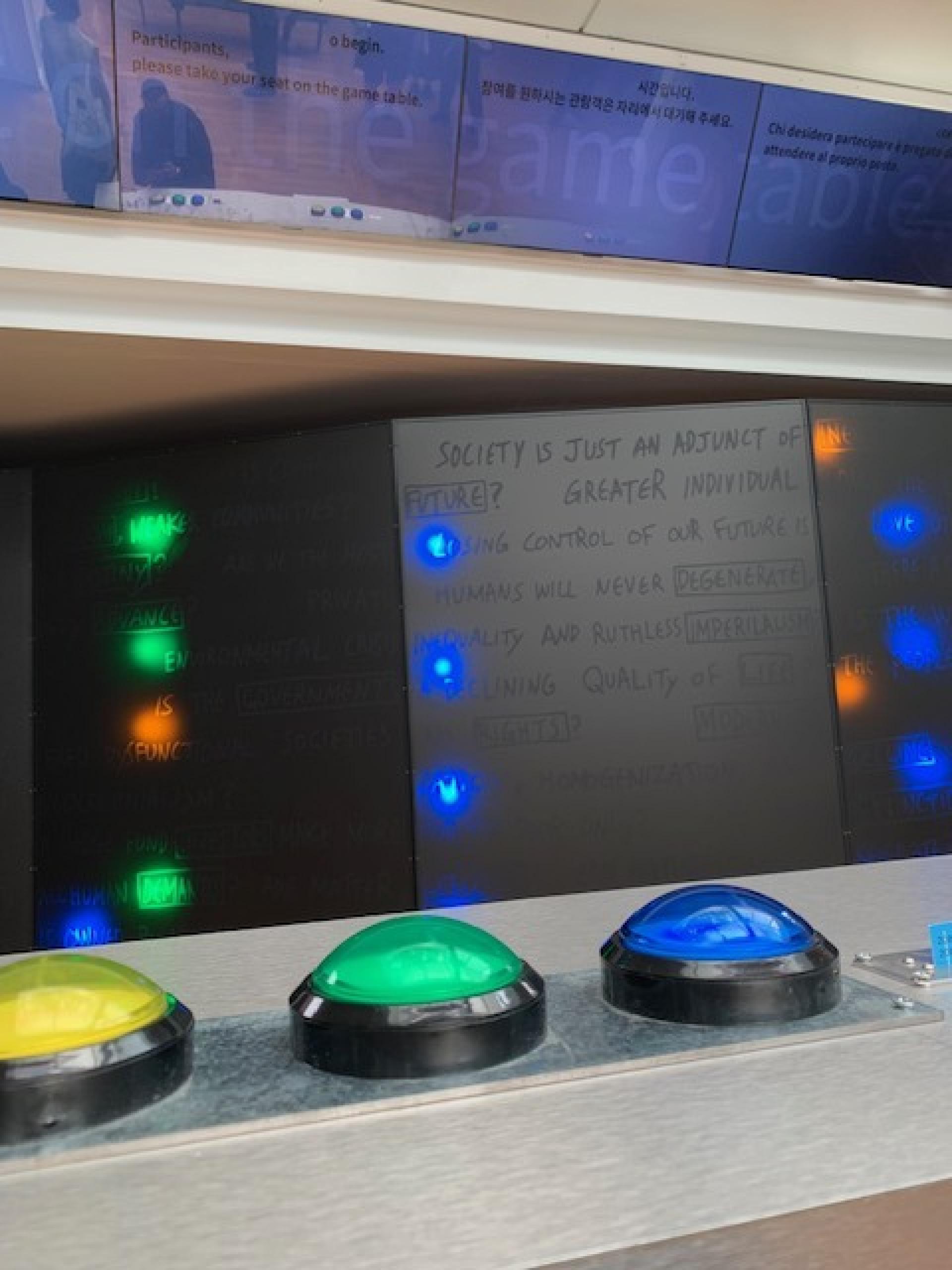
Central to the presentation, A participatory video game allows viewers to choose actions in present and future ecocultural settings. The Pavilion encourages visitors to comprehend how global environmental challenges are founded in humanity’s prior decisions.
In this edition of the 2023 Venice Biennale, the Korean Pavilion, curated by artistic Directors Soik Jung and Kyong Park, presents “2086: Together How?” bringing together architects, community leaders, and artists to explore how people can cooperate in withstanding the current and future environmental crisis until 2086 when the global population is said to the peak.
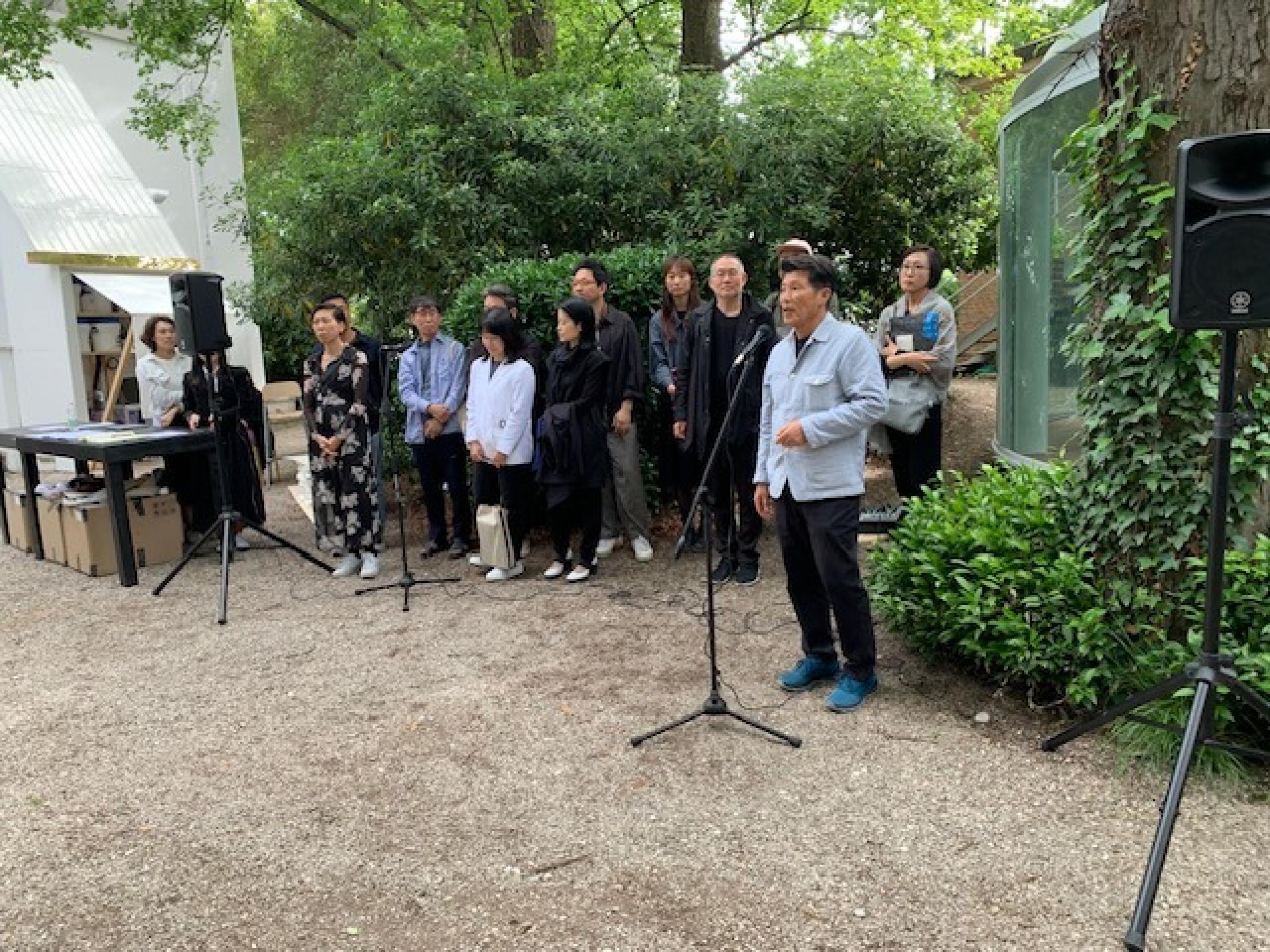
At the opening of the Korean Pavilion.
The exhibition invites visitors to imagine an eco-cultural revolution by critically reassessing the world's capitalist, globalist, and colonial history. The viewers will be encouraged to reconsider current conditions through a participatory video game and a series of multidisciplinary installations that include photographs, drawings, models, videos, and architectural installations.
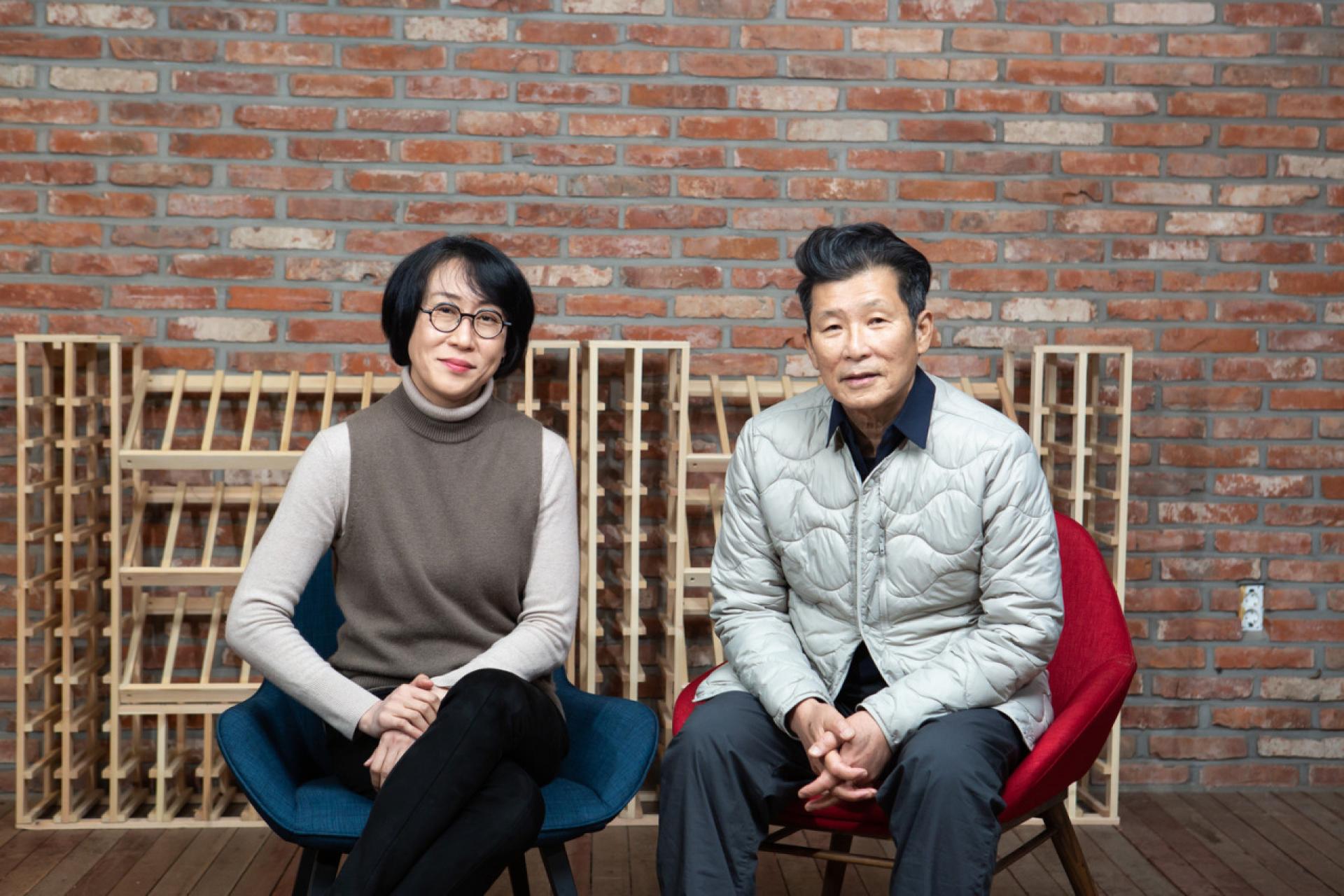
The curators of the Korean pavilion Soik Jung and Kyong Park explores a new ecocultural paradigm for the future. | Photo © Nam Yun Jung
2086: Together How? presents three small communities in South Korea actively involved in regeneration projects, each with a different population and characteristics. The targeted subjects include a significant colonial center in Gunsan, the rural areas of the Gyeonggi Province, and the historic colonial center in the global city of Incheon, symbols of South Korea’s urbanization and westernization. The project’s theme addresses reconciling individualism and communalism in future humanities.

In fact, a group of architects and community leaders has conducted joint research projects with the local neighborhoods, guided by a set of dialects that have shaped our eco-cultural growth. Moreover, the project stresses how the current understanding of development has come through limitless material pleasure, permitting industrialization, colonization, and globalization to spread. According to the pavilion, the dooming environmental catastrophe will be an opportunity for humanity to create a new eco-cultural paradigm for the future.



The highlight of the biennial: a Child eating sunlight by Wolsik Kim
And for the end what will architecture in the future look like? A question asking many curators of the Venice biennial. End of era of star architecture, investment meeting and mingling. We have to change our way of perception, to bcom honest and transparent. As Dunja Krvavac in our last interview states, today is important to "focus on communities, programs, systems that we can change is the most important thing at the moment. We seriously need to take stronger stands on may questions that they are happening."